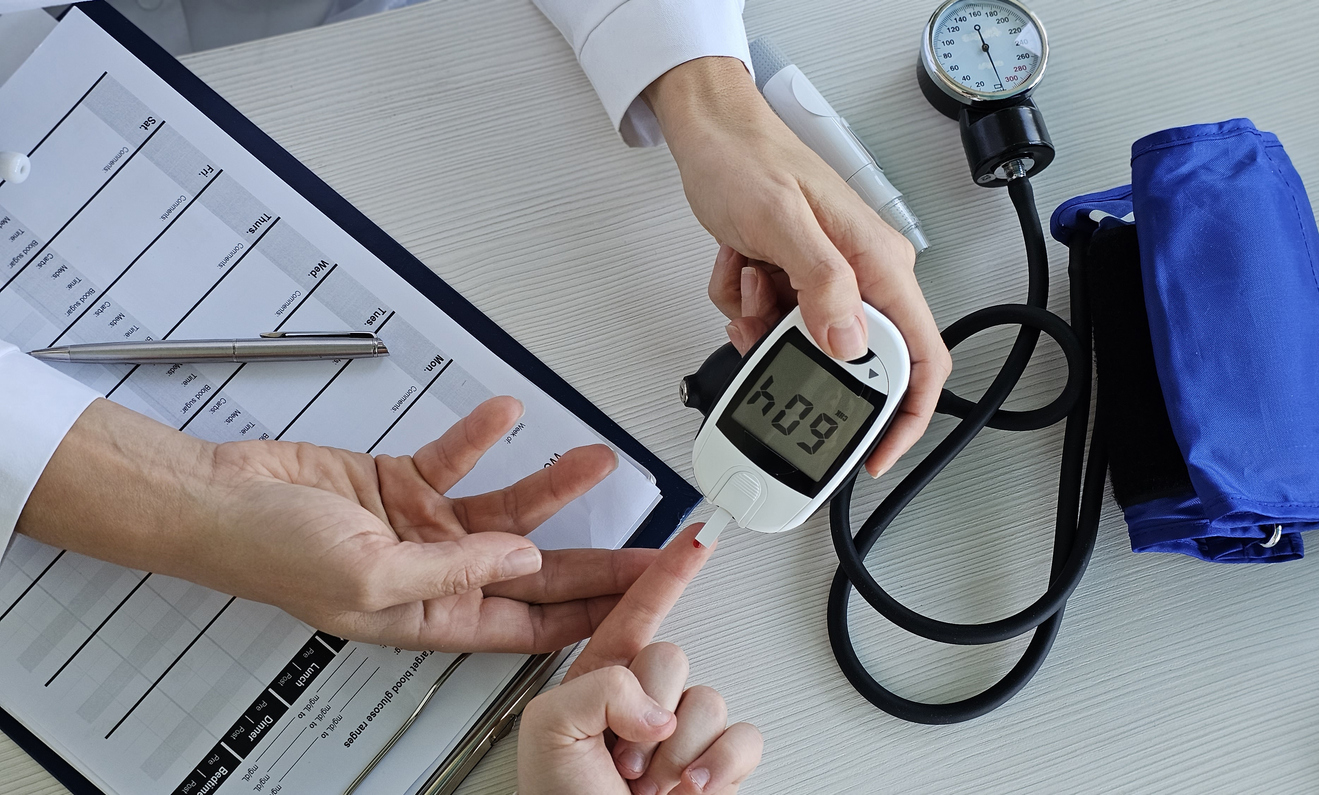Shashikant Iyengar, health coach and founder of Metabolic Health India, stressed that diet is central to both prevention and remission.
Published Aug 28, 2025 | 3:30 PM ⚊ Updated Aug 28, 2025 | 3:30 PM

Diabetes prevalence in India has risen steadily, from about 9% (age-adjusted) in 2011 to projections of 10.8% by 2045.(Representational image/iStock)
Synopsis: Newly diagnosed patients are guided to follow a structured low-carb plan: Protein at each meal, no sugar or refined carbs, and home glucose checks to find their carb tolerance. Having said that, urban vegetarian diets often rely on 70–80 percent grains with little protein, while frequent corporate health checks make the problem more visible.
A recent study published in The Lancet Global Health has revealed that nearly one in five Indians aged 45 and above is living with diabetes, with as many as 40 percent unaware of their condition.
The Longitudinal Aging Study in India (LASI), which surveyed over 58,000 adults, highlighted sharp urban–rural divides, rising prevalence in middle age, and significant gaps in diagnosis and long-term care.
Against this backdrop, experts say India needs to move beyond a sugar-centric approach and place diet and lifestyle at the heart of diabetes management.
Stressing that nutrition can play a decisive role in prevention as well as remission, they argue that food choices, carbohydrate intake, and protein balance deserve as much attention as medication in tackling the country’s growing burden of type 2 diabetes.
Experts say the findings should make India rethink diabetes prevention and care. Shashikant Iyengar, metabolic health coach and founder of Metabolic Health India, stressed that diet is central to both prevention and remission.
Speaking to South First, he said, “Low-carb is a proven age-old intervention. Before insulin, it was the standard for diabetes, and today it is recognised in medical guidelines,” citing the American Diabetes Association’s (ADA) inclusion of low-carb therapy for type 2 diabetes.
He noted that consistently cutting carbs can reverse pre-diabetes and improve type 2 diabetes, often with little or no medication.
“Studies confirm its safety and efficacy,” he said, citing a 2021 BMJ meta-analysis and the Virta trial, which showed long-term remission, weight loss, and better heart markers over five years.
The link between diet and cardiovascular health, often overlooked in diabetes care, is another area where Iyengar sees potential. Low-carb lowers risks like triglycerides, insulin resistance, inflammation, and small dense LDL,’ he said, noting research shows it improves cholesterol even without weight loss, guarding against heart disease while controlling blood sugar.
Iyengar said his approach depends on the stage of diagnosis. Newly diagnosed patients are guided to follow a structured low-carb plan: Protein at each meal, no sugar or refined carbs, and home glucose checks to find their carb tolerance.
For those with long-standing diabetes on insulin or sulfonylureas, he advised working with a doctor to safely cut medication as glucose improves, keeping carbs low, and adding strength training to build muscle and improve insulin sensitivity. He also stressed checking nutrients like vitamin B12 and D.
When asked how urban Indians can lower their risk, Iyengar pointed to lifestyle realities. “It’s the timing, the convenience, and the easy availability of packaged food and delivery apps that shape what people eat,” Iyengar said.
He advised a “protein-first” plate: Eggs, paneer, fish, or curd before grains; replacing popular breakfast items like poha or upma with yoghurt-paneer bowls; swapping evening biscuits with nuts, cheese, or boiled eggs; and stocking protein foods at home while cutting back on sugary snacks and seed-oil fried namkeen.
He also recommended a daily 20–30-minute walk, two to three weekly strength sessions, and short trials of continuous glucose monitoring to track which foods spike individual sugar levels.
Stressing that nutrition should complement conventional care, he said, “Structured low-carb therapy alongside medication improves A1C and cardiometabolic health. The 2025 ADA Standards explicitly lists it as a viable option, but India still lags behind in acceptance,” he said.
According to him, the country’s heavy dependence on cereal, “we are all ‘grainitarians’”, and the belief that dietary change is unsustainable have slowed adoption.
“The current advice of more than 50 percent carbs for type 2 diabetes is grossly wrong. A lower ceiling helps better control,” he said.
On why the affluent and educated carry the heaviest burden, Iyengar explained that prosperity has reshaped Indian diets and daily routines.
“Affluent Indians are eating more refined carbs, junk food, breads, sugary drinks, and foods cooked in seed oils,” he said.
Protein intake, meanwhile, remains low even among the wealthy.
He noted that desk jobs, long sitting hours, and stress add to the risk. Urban vegetarian diets often rely on 70–80 percent grains with little protein, while frequent corporate health checks make the problem more visible.
“Prosperity has fuelled both westernised diets and cultural carb-dependence, triggering an epidemic in the educated middle class first,” he said, warning that rural India is fast catching up through cheap processed snacks.
Iyengar credits pioneers like Anup Singh of dLife.in with popularising a practical “≤100 g/day carb ceiling” that many Indians can follow while still personalising their diet.
He also pointed to his own journey: “I have personally maintained 10 years of drug-free remission from type 2 diabetes on a low-carb, high-protein diet. My data shows safety and efficacy over a decade, and it mirrors the growing global evidence.”
(Edited by Amit Vasudev)
